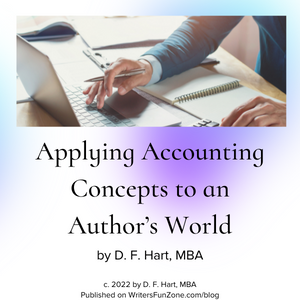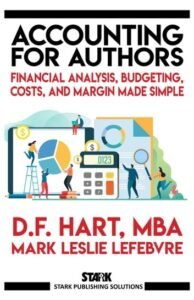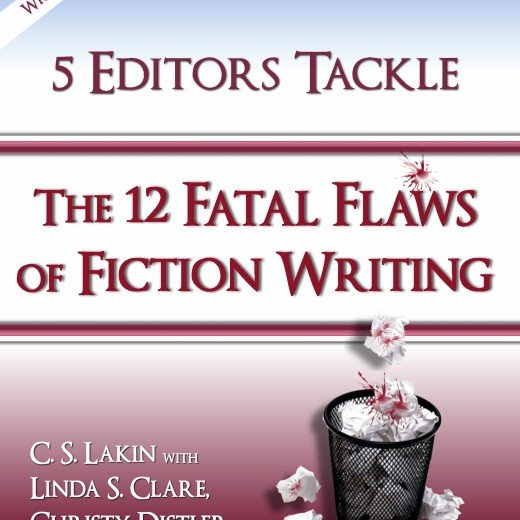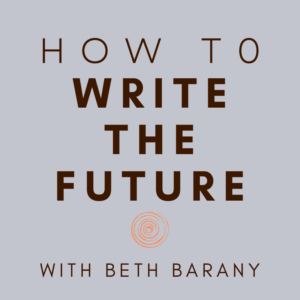Applying Accounting Concepts to an Author’s World by D. F. Hart, MBA
 Today we welcome a new guest writer to Writer’s Fun Zone, D. F. Hart who is stopping by to chat with us about “Applying Accounting Concepts to an Author’s World.” Enjoy!
Today we welcome a new guest writer to Writer’s Fun Zone, D. F. Hart who is stopping by to chat with us about “Applying Accounting Concepts to an Author’s World.” Enjoy!
***
As an accountant, I get asked a lot of questions from fellow authors once they realize that my ‘day job’ and background deals heavily with numbers.
Below are two common questions I’ve fielded over time. Hopefully, at least one answer here can help you on your author journey.
Q. What types of data should I be tracking?
A. While you want to track production costs (cover design, editing, proofreading, formatting, etc.) you also need to keep track of your overhead costs (website build/domain, newsletter list builds, any money you spent to set up your business structure, etc.).
I call these things ‘the costs of doing business‘. The things that you’re going to spend money for, regardless of how many books you publish and sell, even if you don’t publish and sell any.
You’re also going to want to allocate that overhead against your books.
By “allocate” I mean, make each title ‘carry its fair share’ of the overhead cost by portioning out that expense across your revenue streams. If you like, you can take each title’s portion and split it out even further against each of that title’s formats. Such as applying a portion of expense against Z title’s eBook, paperback, large print, and audiobook.
As your number of titles and formats increases, the ‘overhead’ costs assigned to each will go down.
The Allocation Example
I spend $300 per year for my website, and I currently have sixteen titles out on the market.
$300 / 16 = $18.75 per title
Let’s say for each title, I offer them in eBook, paperback, and large print. So, I could take that $18.75 per title, and put one-third toward each format of each title:
$18.75 / 3 formats = $6.25 per title’s format
In other words, each of my 16 eBooks would be responsible for helping me recoup $6.25 of my annual website costs.
Then, when you run a break-even calculation, you can be more comfortable knowing that once that title (or title’s format, if you broke it down to format level) reaches that # of units sold, it’s operating in the black (absent any recurring ad spend specifically for that title, that is).
Q. What’s a good way to help me decide how to spend my budget dollars? Where should my focus be?
A. I believe first and foremost in running a break-even point calculation for every revenue stream that I do or am considering.
Once I know the number of sales past which something would become profitable for me, then I compare results to help me decide where best to focus my budget dollars – and my time.
The break-even formula
Break-Even Units = Total Fixed Costs / (Sales Price per Unit – Variable Cost per Unit).
Or in plain language:
How many units I need to sell = My total costs to produce / My net royalty per sale
For example, I have book one of my thriller series out in eBook, paperback, large print, and audio formats.
I know the break-even ‘magic number’ for each one and I can tell you that by far, eBook is the best performing with regards to how quickly it surpassed its break-even point (no big surprise). But large print’s second place ranking did surprise me, as did audio coming in dead last.
Those trends tell me that right now, I’m better off not worrying so much about audio for other books in that series just yet.
In addition to different formats, some authors also have things like merchandising in place. And once again, break-even point calculation is a good place to start.
Merchandising
A custom-designed pin costs you $500 for a set of 100, and you sell each pin for $7. You’d only have to sell 72 of them to recoup your $500. (Formula: X units = $500/$7, or, X=72). The other 28 out of the 100 you bought would be 100% profit for you when they do sell.
But you also need to ask yourself: what is the demand for that pin versus a custom bookmark, or mouse pad – or hardcover, or translation, or audiobook?
And that’s going to vary from audience to audience.
 Scented candles might work well for a romance audience.
Scented candles might work well for a romance audience.
Urban fantasy? Maybe not so much. Hardcover formats might be a better investment.
So, learning your genre’s fan base matters just as much as knowing your break-even numbers.
Want more accounting knowledge to add to your business toolkit? Grab D.F. Hart and Mark Leslie Lefebvre’s book Accounting for Authors today!
***
About the Author
 D.F. Hart holds an MBA with accounting concentration and has worked as an accountant for over twenty-five years. When she’s not helping her fellow authors become better business owners, she’s writing mystery/thriller as D.F Hart and contemporary and suspenseful romance as Faith Hart.
D.F. Hart holds an MBA with accounting concentration and has worked as an accountant for over twenty-five years. When she’s not helping her fellow authors become better business owners, she’s writing mystery/thriller as D.F Hart and contemporary and suspenseful romance as Faith Hart.
You can find her at:
Her main website: www.2ofharts.com
Her accounting page: https://2ofharts.com/welcome-to-accounting-for-authors
Facebook: https://www.facebook.com/D.F.HartTx
Goodreads: https://www.goodreads.com/author/show/18999540.D_F_Hart







Thank you D.F. for your help in accounting for authors! Any education in this area is much appreciated!
This is a great and attractive blog, given wonderful information. I LOVE AUSSIE is the best Write for Us Accounting site.
Wow, thank you so much for sharing these insightful answers to common questions, DHart! As an aspiring author, I’ve often found myself wondering about the financial side of the writing business, and your expertise is truly invaluable. I appreciate your reminder about the importance of understanding the audience. Tailoring merchandising efforts to suit the genre’s fan base is indeed crucial. Your examples of how different products might resonate differently with romance versus urban fantasy readers highlight the need to connect with the audience on a deeper level.
Thanks for stopping by, Nick.
fantastic article It was very ingenious and illuminating to compare balancing literary aspects to financial figures. It provides a fresh perspective on the complexity of narrative. I appreciate you sharing.
This blog, “Applying Accounting Concepts to an Author’s World” by D. F. Hart, MBA, offers a fascinating perspective bridging accounting principles with the creative realm of authors. It’s a thought-provoking read that sheds light on the intersection of finance and the world of writing. 📚💡 #AuthorInsights
Great read! D.F. Hart’s application of accounting concepts to the author’s world provides a unique perspective. It’s fascinating to see how financial principles can be translated beyond the business realm. Looking forward to more insightful posts!
Thanks for stopping by and commenting, Jack.
Thanks for stopping by and commenting, SilaFit. Appreciate it.
I just finished reading your post on adapting accounting ideas to the author’s reality and felt compelled to leave a remark since it spoke to me so deeply. First and first, congratulations on laying down the accounting fundamentals in such a simple and understandable way. As a fellow writer navigating the often turbulent seas of creative financial management, your thoughts were a breath of fresh air.
Glad you enjoyed it.
wonderful article The comparison of the balancing literary components to financial data was quite clever and insightful. It offers a novel viewpoint on the intricacy of story. Thank you for sharing.
Thank you for sharing such a helpful topic! I got over your blog and found it very interesting. Applying accounting concepts to the world of language offers a unique point of view
I am excited to dive into D.F. Hart, MBA’s ‘Applying Accounting Concepts to an Author’s World’. Knowing the financial sides of creating content is essential for success as an aspiring writer. I’m excited to learn insightful things!